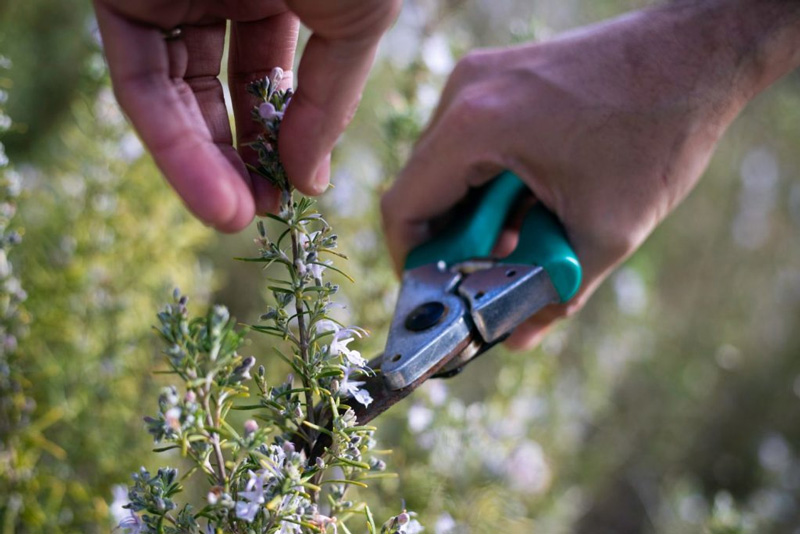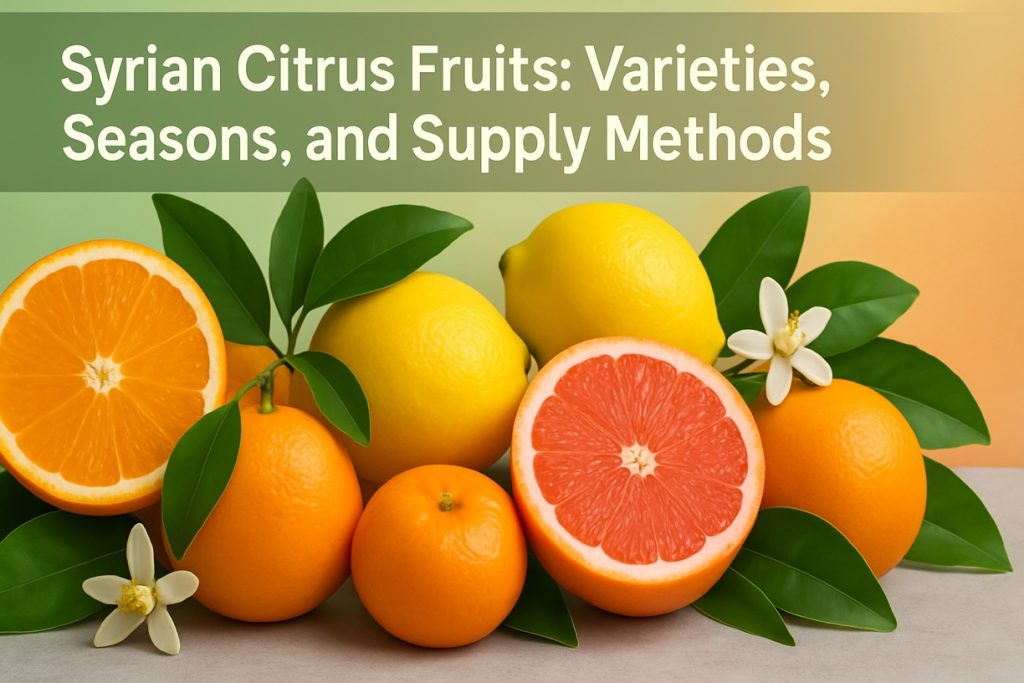Thyme, a humble herb with a rich history, holds a profound significance in Syrian culture and cuisine. Beyond its aromatic appeal in traditional dishes, Syrian thyme represents a legacy of agricultural heritage, deeply rooted in the fertile lands and ancient traditions of the Levant. This content piece delves into the multifaceted world of Syrian thyme leaves, aiming to bridge the knowledge gap between Syrian agricultural producers and international importers. We will explore the unique characteristics of Syrian thyme, the dynamics of its global market, and the pathways to successful cross-border trade.
I. Introduction: The Enduring Legacy of Syrian Thyme
In Syria, the term "thyme" often encompasses more than just the widely known Thymus Vulgaris. It also refers to Origanum syriacum, commonly known as Syrian Oregano or Wild Za'atar, a distinct yet equally cherished herb that forms the heart of the iconic Za'atar spice blend. While Thymus Vulgaris offers a familiar minty, earthy, and subtly citrusy flavor, Origanum syriacum provides a unique warm, herbal, and peppery profile, deeply embedded in the region's culinary identity. Both varieties, cultivated with care and tradition, offer distinct advantages and appeal to diverse palates across the globe.

This article serves as a comprehensive guide for both Syrian farmers and producers seeking to expand their reach into international markets, and for global importers looking to source high-quality, authentic thyme. We aim to provide practical, actionable insights into cultivation, market trends, trade regulations, and logistics, subtly highlighting how streamlined processes and reliable partnerships can unlock the immense potential of Syrian thyme leaves in the global spice market.
II. The Global Thyme Market: A Growing Opportunity

The global market for dried herbs, of which thyme is a significant component, is experiencing robust growth, driven by increasing consumer demand for natural flavoring agents, health-conscious dietary trends, and the rising popularity of diverse cuisines. This expanding market presents substantial opportunities for producers and importers alike.
Market Size and Growth: The dried herbs market has shown consistent expansion, with various reports indicating a healthy growth trajectory. For instance, the global dried herbs market was valued at approximately USD 2.05 billion in 2024 and is projected to reach between USD 3.21 billion and USD 8.82 billion by 2029-2035, depending on the source and specific market segment analysis. This growth underscores a sustained and increasing demand for products like thyme.
Demand Trends: The primary drivers behind this escalating demand include:
- Culinary Applications: Thyme's versatile flavor profile makes it a staple in various cuisines worldwide, from Mediterranean and Middle Eastern to European and North American dishes. Its use in meats, stews, sauces, and baked goods continues to drive its consumption.
- Health and Wellness: Thyme is recognized for its medicinal properties, including antioxidant and antimicrobial benefits. The growing consumer interest in natural remedies and functional foods contributes to its demand.
- Natural Flavoring: As consumers increasingly seek alternatives to artificial additives, natural herbs like thyme are gaining prominence in the food industry.
Key Producing Regions: While thyme is cultivated globally, major producing and exporting countries include Turkey, China, India, the Netherlands, Spain, Germany, Peru, the UAE, Thailand, and Pakistan. Syria, with its rich agricultural heritage and ideal growing conditions, holds a unique position to expand its presence in this competitive market, offering distinct varieties and traditional cultivation practices that appeal to discerning international buyers.
III. Syrian Thyme: A Unique Terroir and Tradition

Syria's diverse climate and fertile soils provide an ideal environment for cultivating various types of thyme, each contributing to the country's rich culinary heritage. The unique terroir, combined with generations of traditional farming practices, imbues Syrian thyme with distinctive qualities highly sought after in global markets.
Cultivation and Characteristics:
In Syria, the term 'thyme' often refers to two primary species: Thymus Vulgaris and Origanum syriacum (Syrian Oregano or Wild Za'atar). While both are aromatic herbs, they possess distinct characteristics and culinary applications.
- Thymus Vulgaris in Syria: This widely recognized culinary herb thrives in Syria's sunny, dry conditions. It prefers well-drained, sandy, or rocky soils and tolerates drought and alkaline conditions. Full sunlight is crucial for its optimal growth and the development of its potent flavor. Syrian Thymus Vulgaris typically offers a minty, fresh, earthy, and subtly citrusy flavor, often with notes of clove and a savory undertone. Its robust profile makes it a versatile ingredient in a wide array of dishes.
- Origanum syriacum (Syrian Oregano/Wild Za'atar): This species is deeply ingrained in Syrian culinary traditions, forming the core of the beloved Za'atar spice blend. Origanum syriacum is known for its rich, herbal, and warm flavor, often described with nuances of peppermint, grass, and a peppery kick. When incorporated into Za'atar, it contributes earthy, tangy, and nutty notes. This variety is found both wild and cultivated in Syrian provinces, particularly in the north-west, coastal, and south-west regions. It flourishes in sunny, warm locations with superior soil drainage.
- Comparison: While Thymus Vulgaris is a global culinary staple, Origanum syriacum holds a special place in Middle Eastern cuisine. The choice between the two often depends on the desired flavor profile and traditional use. Both, however, are valued for their bioactive compounds, including antioxidants and antimicrobials, contributing to their appeal beyond just flavor.
Harvesting and Post-Harvest Practices:

The quality of dried thyme is significantly influenced by harvesting and post-harvest handling. Syrian farmers often employ traditional methods passed down through generations, ensuring the preservation of the herb's aromatic and flavorful compounds.
- Optimal Harvest Seasons and Methods: Thyme is typically harvested during the summer months, with the most potent flavor achieved just before the plant flowers. Harvesting usually occurs when the plant reaches 6-8 inches in height, approximately 60-90 days after planting from seeds. Clipping sprigs or leaves in the early morning, before the sun's intensity peaks, helps retain essential oils and flavor.
- Traditional and Modern Post-Harvest Processing: After harvesting, thyme is traditionally dried, often by air-drying in shaded, well-ventilated areas to prevent mold and preserve color and aroma. Once dried, it may be ground using traditional methods. Modern processing techniques, such as controlled drying environments, are also employed to ensure consistent quality and hygiene. Research indicates that methods like gamma irradiation can be used for decontamination, highlighting a focus on microbial safety in some Syrian processing facilities.
- Importance of Proper Packaging and Storage: To maintain the fresh flavor and extend shelf life, dried thyme requires proper packaging and storage. Airtight containers or bags are crucial to protect the herb from moisture, light, and air, which can degrade its quality. For fresh thyme, storing it wrapped in a damp paper towel within a sealed bag can help prolong its freshness.
Quality and Authenticity:
Syrian thyme is renowned for its authentic flavor and high quality, a direct result of the region's unique environmental conditions and the expertise of its farmers. The specific chemical composition of thyme, including key components like thymol, which contributes to its strong antimicrobial and antioxidant properties, can vary with geographical location. This terroir effect gives Syrian thyme a distinct advantage in the global market, appealing to importers seeking genuine and superior products.

IV. Navigating the International Trade Landscape
For Syrian thyme to reach global markets, both producers and importers must navigate a complex web of trade dynamics, regulations, and logistical considerations. Understanding these elements is crucial for successful cross-border commerce.
Export Markets and Trade Dynamics:
Syria has historically been a significant producer and exporter of thyme and related herbs. While comprehensive, up-to-date trade data can be challenging to acquire due to geopolitical factors, available information suggests a consistent, albeit sometimes understated, presence in international markets. In 2014, Syria was noted as a significant exporter of "Thyme and bay leaves". More recent trends indicate a rising export price per kilogram for Syrian thyme, suggesting a growing appreciation for its value in international markets. Key export destinations, though often aggregated with other spices, have included neighboring countries like Jordan and international markets such as the United States. Syrian companies are actively engaged in exporting, offering specialized blends of Syrian thyme leaves to various markets.
Import Requirements and Regulations:
International markets have stringent requirements for imported agricultural products, particularly herbs and spices, to ensure food safety and quality. These regulations vary by region:
- European Union (EU): The EU maintains rigorous import rules concerning hygiene, consumer safety, and animal health. Recent regulations have intensified inspections on thyme and cumin imports, potentially increasing costs and operational challenges for exporters. European buyers frequently demand radioactivity contamination tests for imported spices and herbs. The Single Administrative Document (SAD) is a mandatory declaration for importers.
- North American Market (US & Canada): Tariffs can impact the competitiveness of imported thyme. For instance, the U.S. applies a 4.8% tariff on processed thyme (Thyme, other than crude or not manufactured, HS code 09104030), while crude thyme may enter duty-free. Phytosanitary certificates are a standard requirement to prevent the introduction of pests and diseases.
- Asian Market: Countries in Asia, such as Japan and the Philippines, enforce strict inspection, documentation, and risk assessment protocols. A phytosanitary certificate issued by the National Plant Protection Organization (NPPO) of the exporting country is typically required for plant imports.
Documentation and Certifications:
Adherence to international documentation and certification standards is paramount for Syrian exporters to gain market access and build trust. Key documents include:
- Phytosanitary Certificates: Essential for all agricultural products, certifying freedom from pests and diseases. These often require legalization for Syrian trade.
- Certificates of Origin: Verifying the product's country of origin for customs and tariff purposes.
- Commercial Invoice and Packing List: Standard trade documents detailing goods and packaging.
- Bill of Lading/Air Waybill: Transportation documents issued by the carrier.
- Quality Certifications: Compliance with international food safety standards (e.g., ISO, HACCP) and specific market requirements (e.g., Maximum Residue Limits for pesticides, heavy metal limits, microbial contamination standards) is crucial. Initiatives are underway to enhance Syrian agricultural exports through rigorous product sampling, laboratory testing, and pre-shipment inspection.
Logistics and Shipping:
Exporting from Syria presents unique logistical challenges due to infrastructure damage, sanctions, and complex customs procedures. However, various shipping methods are employed:
- Shipping Methods: Sea freight is common for bulk exports, offering cost-effectiveness for larger volumes (Full Container Load - FCL, and Less than Container Load - LCL). Air freight provides faster delivery for high-value or time-sensitive products, albeit at a higher cost. Land freight is vital for regional trade, often connecting to ports in neighboring countries for onward sea or air shipment.
- Challenges: Infrastructure limitations, including damaged roads and ports, contribute to increased transportation costs and delays. Sanctions can complicate shipping routes, insurance, and access to international logistics providers, leading to longer lead times and higher operational expenses. Complex customs procedures at borders can also cause significant delays.
- Lead Times: While specific lead times are variable, they are generally longer than from countries with less constrained trade routes. Factors such as transshipment through third countries, customs clearance efficiency, and the availability of shipping services significantly influence delivery schedules.
V. Connecting Producers and Importers: Bridging the Gap
For Syrian thyme to truly flourish in the global market, effective connections between producers and international importers are essential. This requires understanding importer expectations, addressing common sourcing challenges, and leveraging modern solutions to streamline trade.
Importer Sourcing Criteria:
International buyers prioritize several key factors when selecting thyme suppliers:
- Quality and Consistency: Importers seek high-quality thyme that consistently meets sensory (flavor, aroma, appearance) and chemical specifications. This includes adherence to purity standards, freedom from foreign matter, and low microbial counts.
- Certifications and Compliance: Compliance with international food safety standards (e.g., HACCP, ISO 22000), organic certifications, and specific import regulations (e.g., MRLs, radioactivity tests) are often non-negotiable.
- Reliability and Traceability: Importers value suppliers who can guarantee consistent supply, adhere to delivery schedules, and provide transparent traceability of their products from farm to fork.
- Competitive Pricing: While quality is paramount, competitive pricing remains a significant factor in purchasing decisions.
Pain Points in Sourcing from the Middle East:
Sourcing from regions like the Middle East, while offering unique products, can present challenges for international importers:
- Logistical Complexities: As discussed, infrastructure issues, limited direct shipping routes, and customs complexities can lead to delays and increased costs.
- Compliance and Documentation: Navigating diverse and often stringent import regulations, coupled with the need for specific certifications, can be daunting.
- Trust and Transparency: Building trust with new suppliers, especially across cultural and geographical divides, requires transparent communication and verified information.
- Payment and Financing: Geopolitical factors can complicate traditional financial transactions, requiring alternative solutions.
Discovering New Suppliers:
Importers typically discover new suppliers through various channels:
- Trade Shows and Exhibitions: Industry-specific events provide opportunities for direct engagement and product sampling.
- Online B2B Platforms: Digital marketplaces and trade platforms are increasingly becoming primary avenues for sourcing, offering access to a wider pool of suppliers and product information.
- Referrals and Industry Networks: Word-of-mouth and established industry connections play a vital role.
- Direct Outreach: Importers may directly contact producers or exporters based on market research.
The Role of Digital Platforms:
In an increasingly interconnected world, digital platforms offer a powerful solution to bridge the gap between Syrian producers and international importers. Such platforms can:
- Facilitate Business Matching and Verified Profiles: By providing a centralized hub for verified business profiles and product listings, these platforms enable importers to easily discover and evaluate potential Syrian suppliers. This transparency builds trust and streamlines the initial sourcing process.
- Streamline Digital Documentation and Compliance Verification: Digital tools can simplify the management and exchange of necessary documents, such as phytosanitary certificates and certificates of origin. They can also provide guidance on compliance requirements, helping both parties navigate complex regulations more efficiently.
- Provide Solutions for Logistics and Trade Finance Challenges: By connecting users with vetted logistics providers and offering insights into alternative trade finance mechanisms, these platforms can mitigate some of the most significant pain points in cross-border trade, particularly for regions facing unique challenges.
- Offer Educational Resources: Comprehensive resources on market trends, import regulations, quality standards, and best practices can empower both producers to meet international demands and importers to make informed sourcing decisions.
By offering a comprehensive suite of services that address the core challenges of international trade—from discovery and compliance to logistics and finance—a well-designed digital platform can unlock new opportunities for Syrian thyme leaves in the global market, fostering sustainable growth and mutually beneficial partnerships.
VI. Conclusion: The Future of Syrian Thyme in Global Trade

Syrian thyme, in its diverse forms of Thymus Vulgaris and Origanum syriacum, represents more than just a culinary herb; it embodies a rich agricultural heritage and a resilient spirit. With its distinctive flavor profiles, traditional cultivation methods, and inherent quality, Syrian thyme holds immense, untapped potential in the global spice market. The increasing worldwide demand for natural and authentic ingredients further amplifies this opportunity.
While navigating the complexities of international trade—including stringent regulations, logistical hurdles, and geopolitical considerations—presents significant challenges for Syrian producers, these are not insurmountable. By focusing on adherence to international quality standards, transparent documentation, and efficient logistics, Syrian thyme can overcome these barriers and establish a strong presence in new markets.

For international importers, Syrian thyme offers a unique and high-quality sourcing option, providing a distinct flavor that can enrich a wide range of products. The key to unlocking this potential lies in fostering direct, transparent, and reliable connections between Syrian producers and global buyers. Platforms that facilitate verified business matching, streamline compliance, and offer solutions for logistics and trade finance are instrumental in bridging this gap. By embracing such streamlined, compliant, and efficient trade pathways, both Syrian agricultural producers and international importers can cultivate mutually beneficial partnerships, ensuring that the golden spice of Syrian thyme continues to enrich kitchens and lives across the globe.



